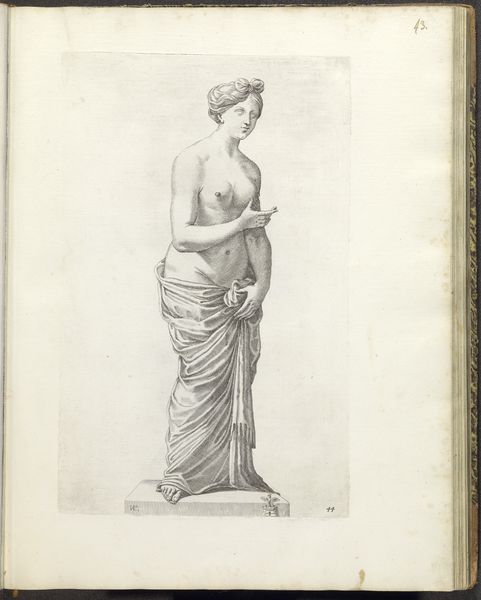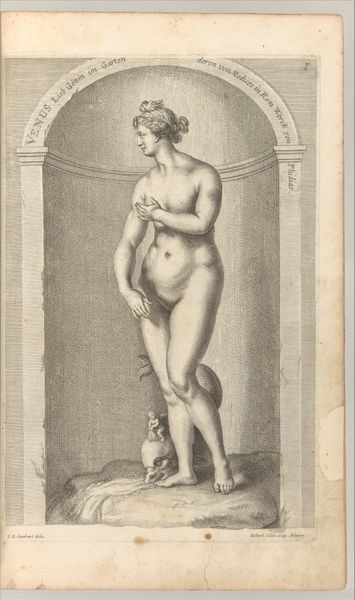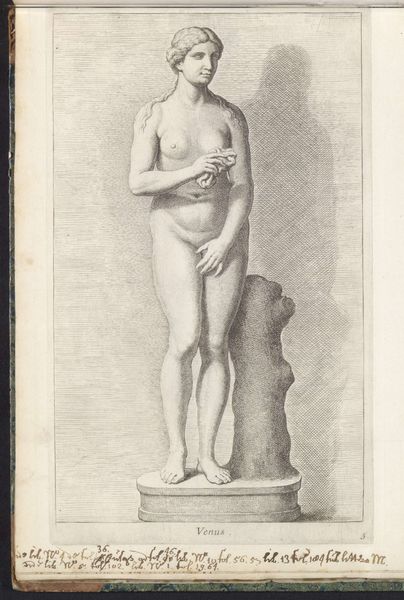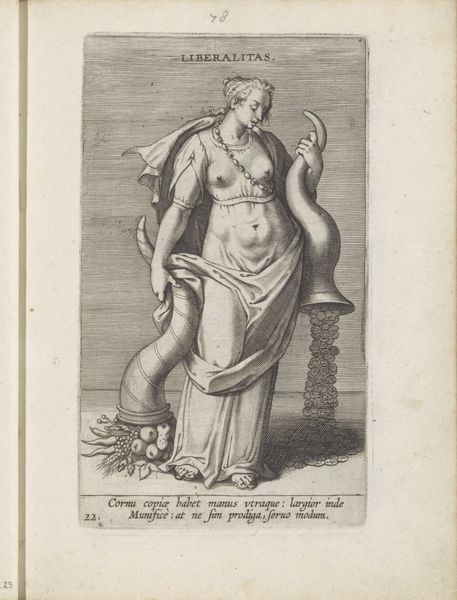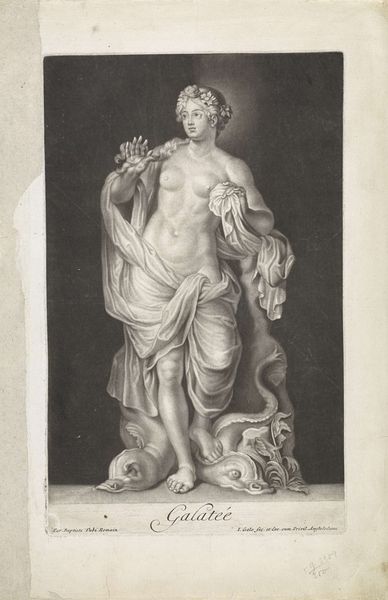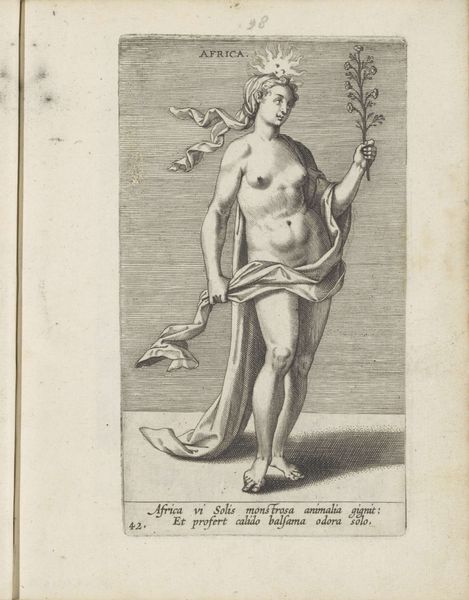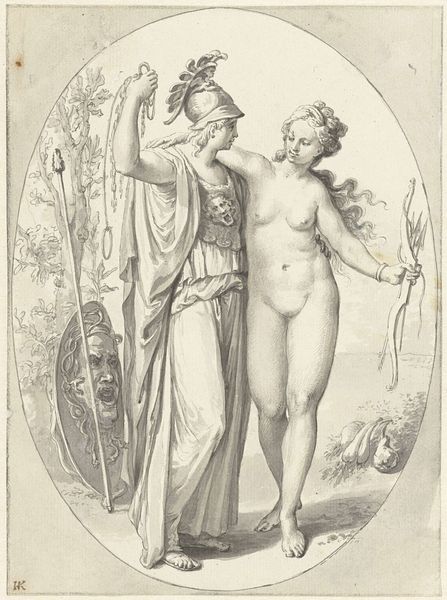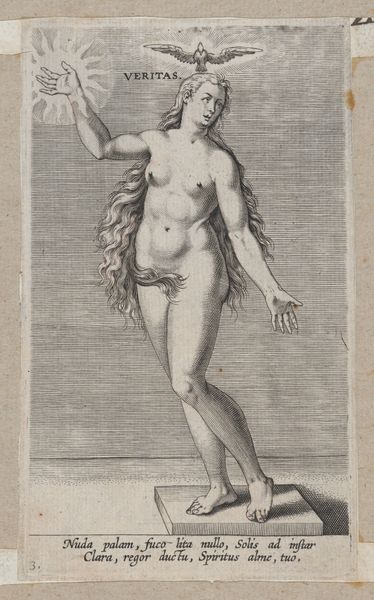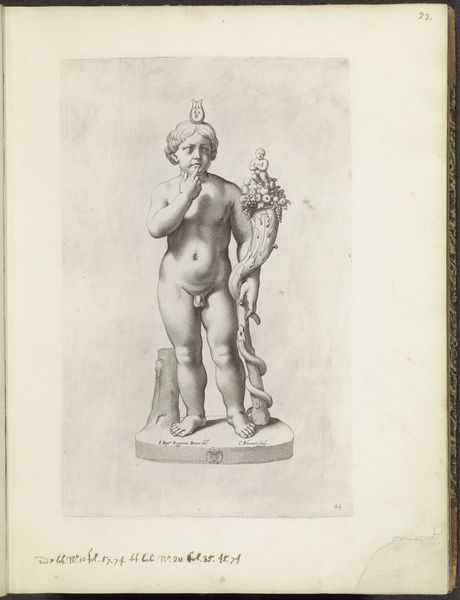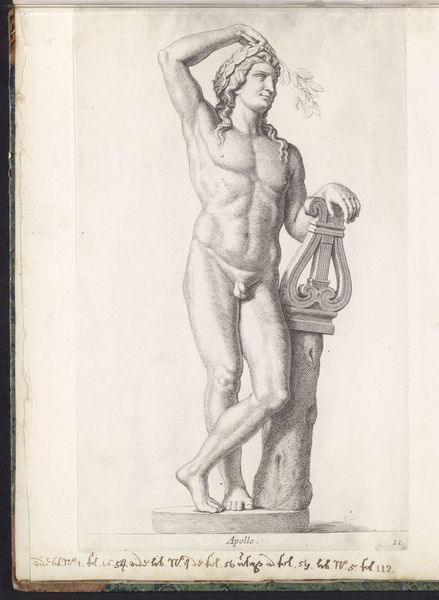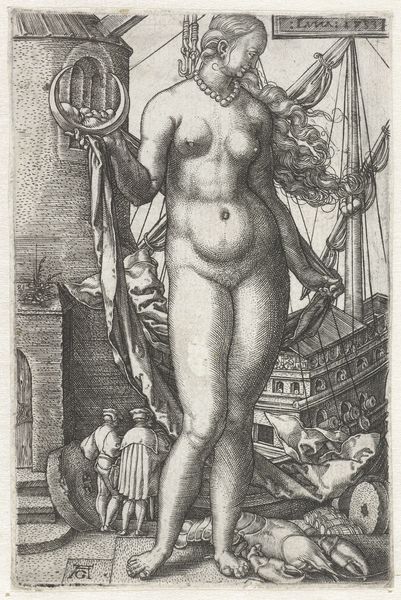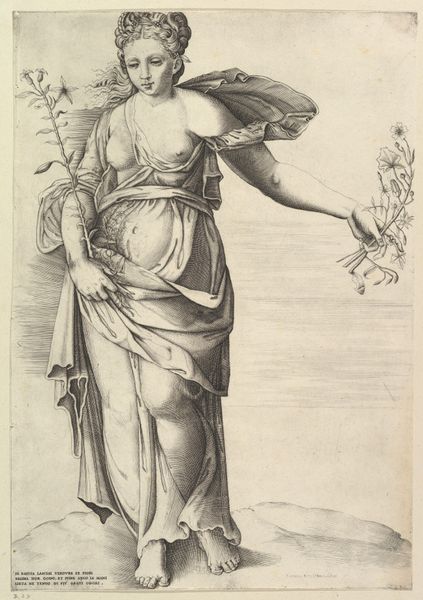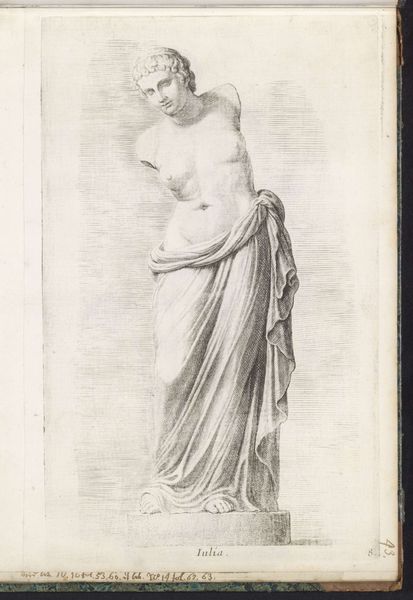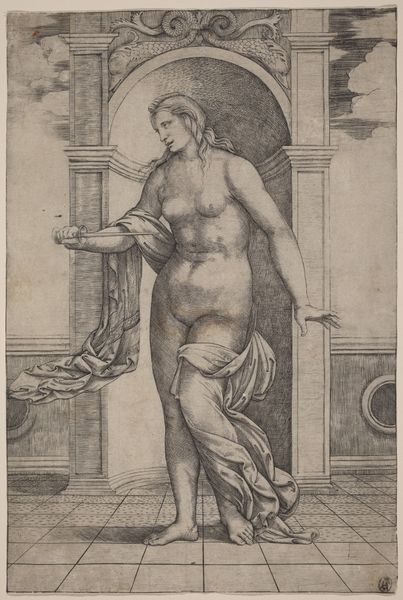
drawing, paper, ink, sculpture, pencil
#
drawing
#
baroque
#
pencil sketch
#
landscape
#
figuration
#
paper
#
ink
#
coloured pencil
#
sculpture
#
pen-ink sketch
#
pencil
#
watercolour illustration
#
history-painting
#
academic-art
#
nude
#
pencil art
#
realism
Dimensions: height 325 mm, width 201 mm
Copyright: Rijks Museum: Open Domain
Curator: This drawing, titled “Sculptuur van Flora,” rendering a sculpture of Flora, the Roman goddess of flowers and spring, was created by Hubert Quellinus sometime between 1646 and 1670. It's currently housed here at the Rijksmuseum. Editor: I'm immediately struck by its delicacy, considering it’s a sketch. It’s so lightly rendered, almost ethereal, especially with that cascading drapery. What material do we think the sculpture it's depicting might have been made of? Curator: Most likely marble. We often see Flora depicted in Neoclassical and Baroque sculpture, emblems of rebirth and fertility. The cornucopia overflowing with fruit she’s holding reinforces this symbolism; an age-old visual device representing abundance. She carries not only literal weight, but immense symbolic meaning. Editor: Speaking of the cornucopia, look at the way it's depicted— almost an afterthought, sketched in lightly. I wonder if the drawing itself was a preparatory sketch for a larger sculptural piece? We could consider its practical function in the division of workshop labor, especially as drawings provided detailed instruction. Curator: That’s a sharp observation. Considering Quellinus’ focus as a sculptor, the likelihood that this rendering served a utilitarian purpose within the workshop seems highly probable. Yet it remains beautiful. Flora herself represents the renewal of life and beauty each spring after the bleakness of winter. The drawing itself then could act as a symbol of that regeneration – an eternal cycle. Editor: I'm curious, does this connect with Dutch horticultural practices at the time? Were specific flowers given cultural or economic importance? Curator: Absolutely. Tulip mania had gripped the Dutch Republic just decades prior. So Flora and her dominion would carry immense social, economic and indeed, psychological resonance for audiences then. Beyond the beauty, the cost! Editor: Right. It's that interplay of artistry and the conditions of production, eh? Considering paper and ink at the time, it's fascinating to see such precision achieved with seemingly humble materials, speaking to the mastery embedded in early modern sculpture practice. Curator: Ultimately, the drawing captures both the visual grace of the statue itself but also layers the accumulated cultural understanding and deep seated beliefs regarding natural cycles within Dutch culture. Editor: And that understanding, in turn, was embedded within those systems of making, isn't it? From the choice of paper, the precise pencil stroke. Even the act of sketching contains a whole world of activity, patronage, and labor.
Comments
No comments
Be the first to comment and join the conversation on the ultimate creative platform.
